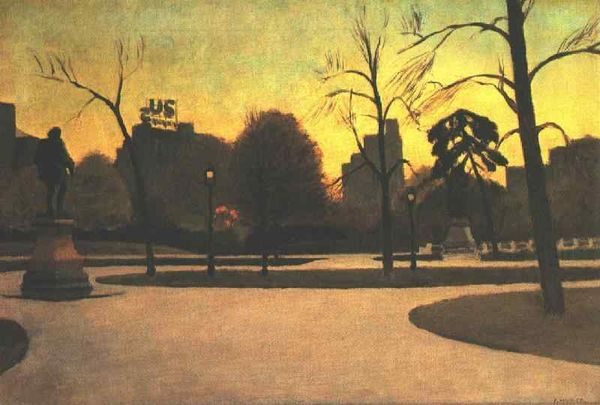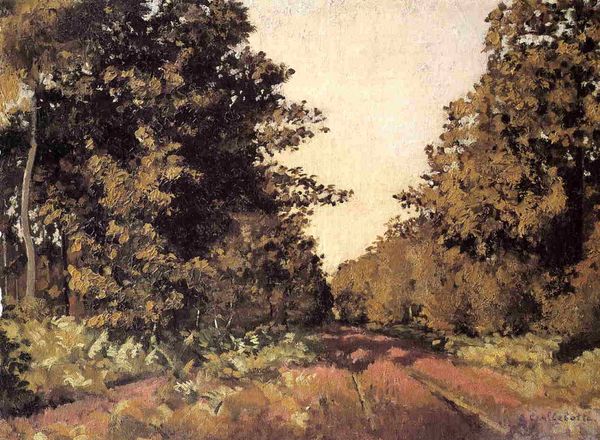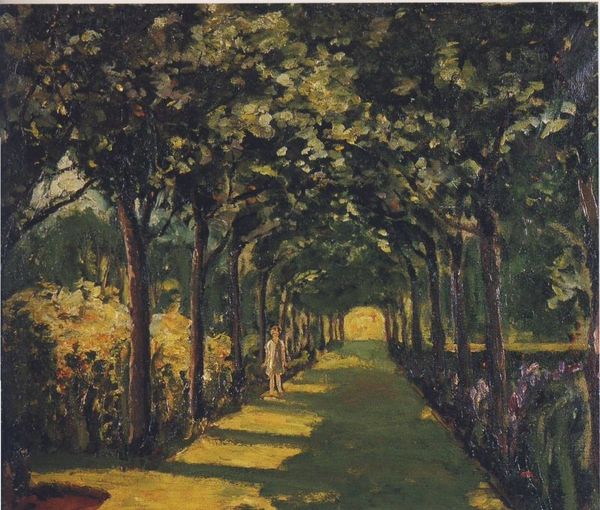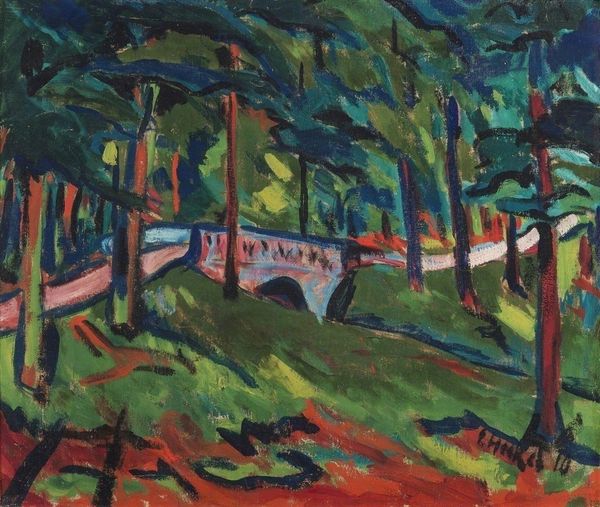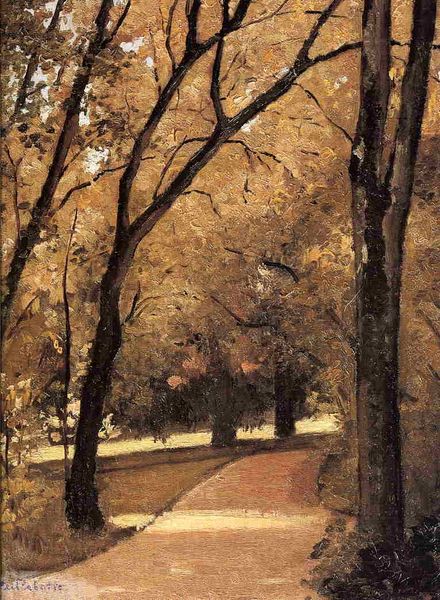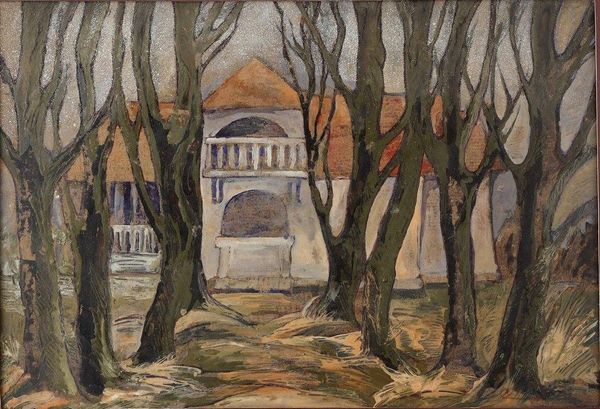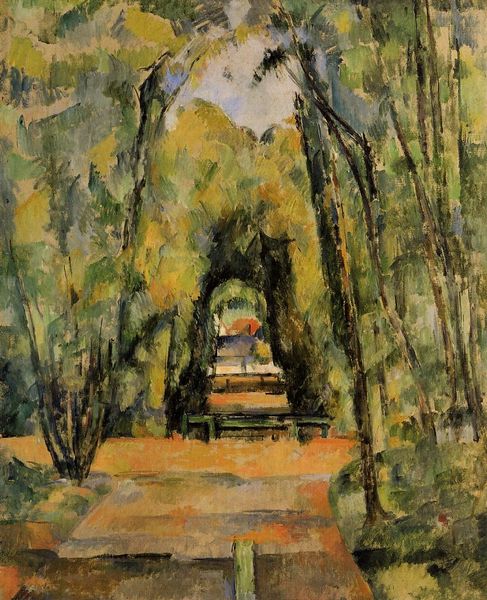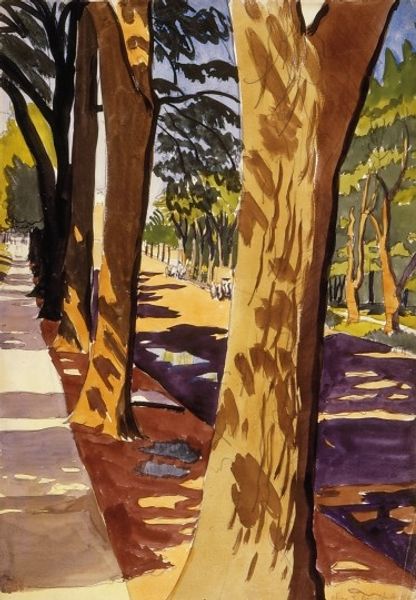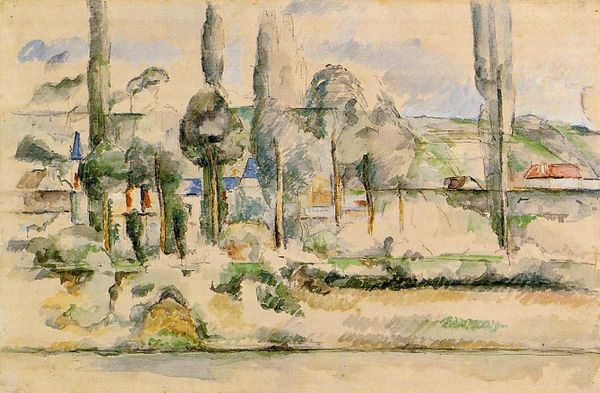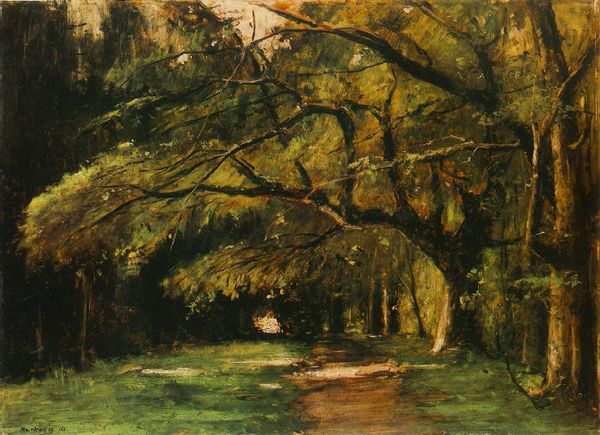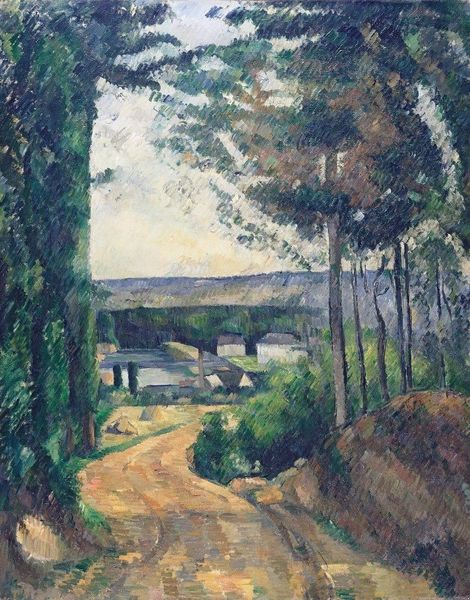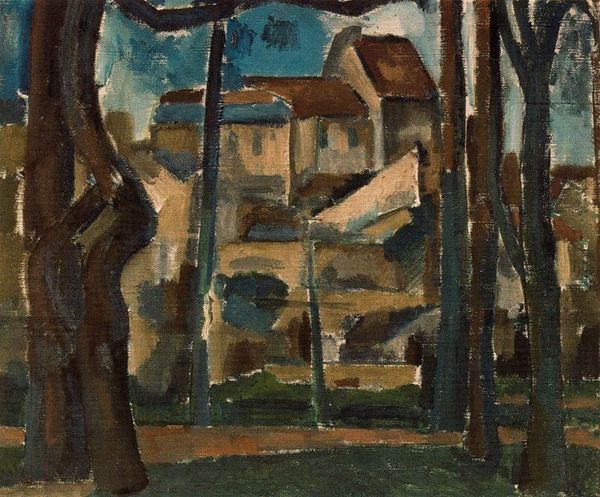
Copyright: Public domain US
Editor: This is Henri Matisse's "The Path in the Bois de Boulogne," painted in 1903 using oil. It's remarkably dark for an Impressionist landscape; there's a sombre quality to it. What do you see in this piece, beyond the immediate impression? Curator: The darkness, as you call it, is precisely where the power lies. Bois de Boulogne, traditionally a site of leisure, here becomes a psychological space. Notice how the path, instead of inviting us in, almost seems to recede, to vanish into shadow. Consider the trees; they are not just trees, but gatekeepers, silent witnesses. Editor: Gatekeepers? That's intriguing. Can you elaborate on the symbolism? Curator: Certainly. Trees in art, across cultures, often represent life, growth, but also the connection between earth and sky, the seen and unseen. The dense canopy pressing down might symbolize the weight of societal expectations, perhaps even anxieties. Editor: So, Matisse is using a familiar scene to explore inner turmoil? Curator: Precisely! It’s about what isn't immediately visible. The subconscious filters of our own perception shape this experience. Does that limited color palette evoke specific emotions or memories for you? Editor: There’s a melancholy feeling, like autumn nearing its end and winter about to arrive. Curator: It makes you contemplate memory, time, the journey of life itself, doesn't it? It is through symbols that collective emotional truths can continue to live through the ages. Editor: It definitely shifts my perception of landscape painting. Thanks for sharing! Curator: My pleasure. Hopefully it underscores how symbolic readings offer a rich way to view our collective visual history.
Comments
No comments
Be the first to comment and join the conversation on the ultimate creative platform.
